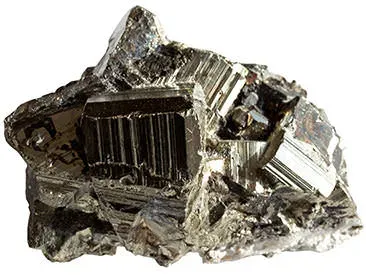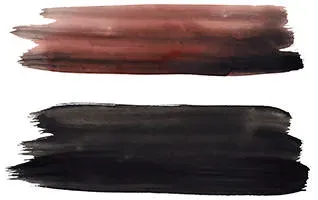 The name sphalerite gives us a hint to the mineral's nature, as it is derived from the Greek word sphaleros, meaning misleading. Since sphalerite is variable in color and appearance, it can be hard to identify and is often confused with other minerals. Over the years, sphalerite has attracted many other names such as blende, which comes from the German word for blind or deceiving.
The name sphalerite gives us a hint to the mineral's nature, as it is derived from the Greek word sphaleros, meaning misleading. Since sphalerite is variable in color and appearance, it can be hard to identify and is often confused with other minerals. Over the years, sphalerite has attracted many other names such as blende, which comes from the German word for blind or deceiving.
 Sphalerite is an important zinc ore that is exploited industrially. It is frequently found in hydrothermal veins, and also occurs in limestones, where ore bodies have been formed. Although it is too fragile for jewelry, rating only a 3.5 to 4.0 on the hardness scale, sphalerite is a magnificent stone for collectors. Its high refraction gives it a fire that is actually much higher than a
Sphalerite is an important zinc ore that is exploited industrially. It is frequently found in hydrothermal veins, and also occurs in limestones, where ore bodies have been formed. Although it is too fragile for jewelry, rating only a 3.5 to 4.0 on the hardness scale, sphalerite is a magnificent stone for collectors. Its high refraction gives it a fire that is actually much higher than a ![]() diamond's. Sphalerite actually has similar structure to a diamond. Sphalerite has been confused with galena in the past, which is lead sulfide, to which it is also very similar. Sphalerite is one of the few minerals that has six directions of cleavage, which makes cutting very difficult.
diamond's. Sphalerite actually has similar structure to a diamond. Sphalerite has been confused with galena in the past, which is lead sulfide, to which it is also very similar. Sphalerite is one of the few minerals that has six directions of cleavage, which makes cutting very difficult.
 Sphalerite is usually very dark brown to black in color, and can be transparent to translucent, with high luster. Occasionally, it is brown, yellow, reddish, green, and less commonly, white or colorless. Transparent sphalerite is cut into gemstones, but is only in demand by collectors.
Sphalerite is usually very dark brown to black in color, and can be transparent to translucent, with high luster. Occasionally, it is brown, yellow, reddish, green, and less commonly, white or colorless. Transparent sphalerite is cut into gemstones, but is only in demand by collectors.
 Sphalerite is also pyroelectric, meaning that it forms an electrical charge when heated or cooled. It is also triboluminescent, meaning it may glow if crushed. Transparent sphalerite stones are found at Santander, Spain, and Naica, Mexico. Sphalerite can also be found in Burma, Australia, Peru, Morocco, Germany and Italy, and in the USA in Tennessee, Missouri, and Illinois.
Sphalerite is also pyroelectric, meaning that it forms an electrical charge when heated or cooled. It is also triboluminescent, meaning it may glow if crushed. Transparent sphalerite stones are found at Santander, Spain, and Naica, Mexico. Sphalerite can also be found in Burma, Australia, Peru, Morocco, Germany and Italy, and in the USA in Tennessee, Missouri, and Illinois.